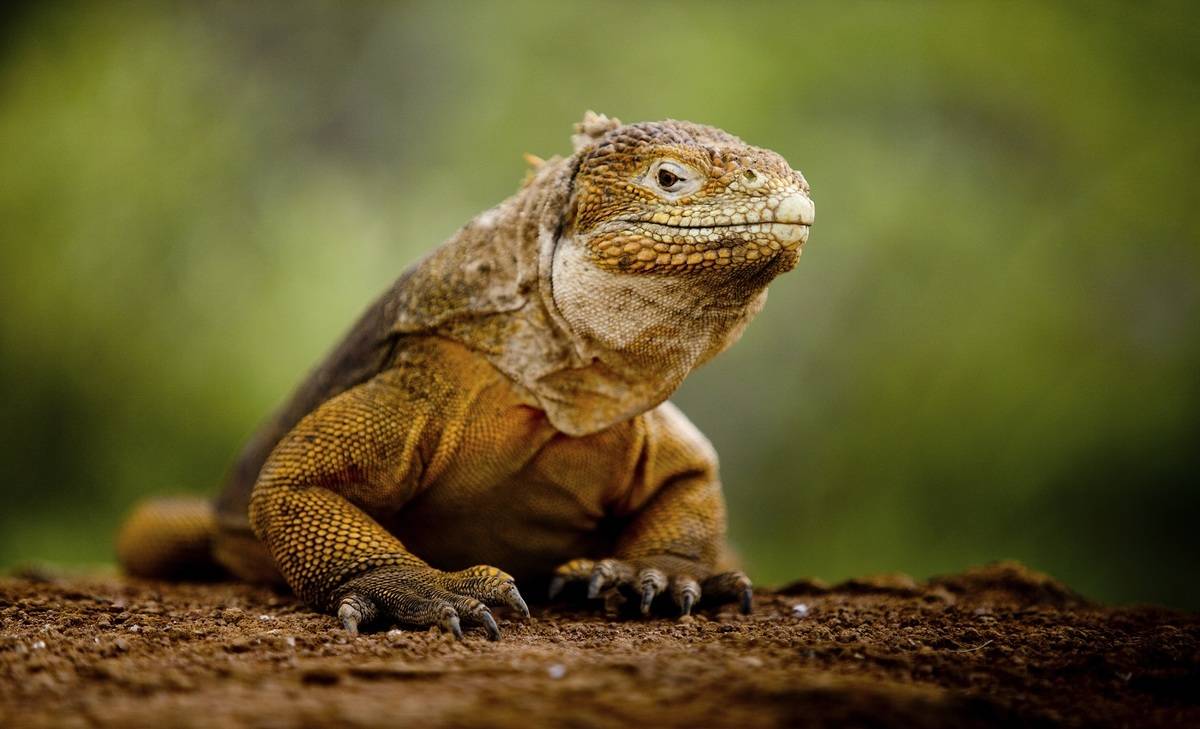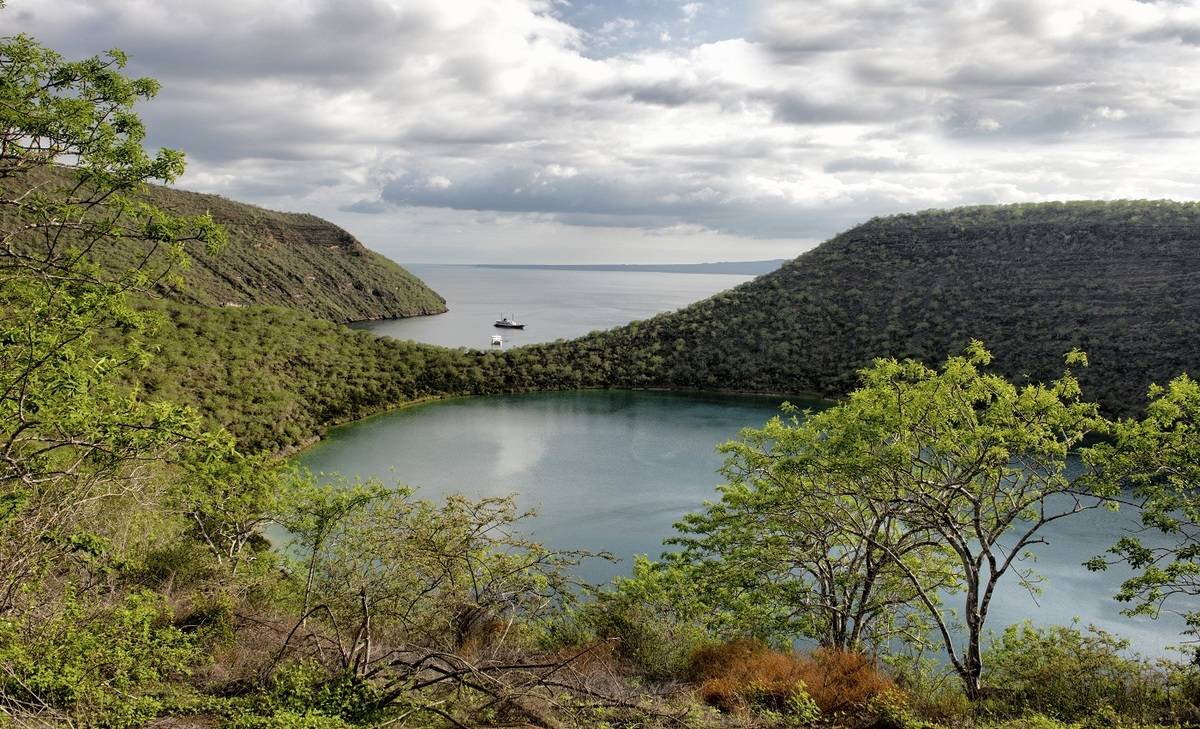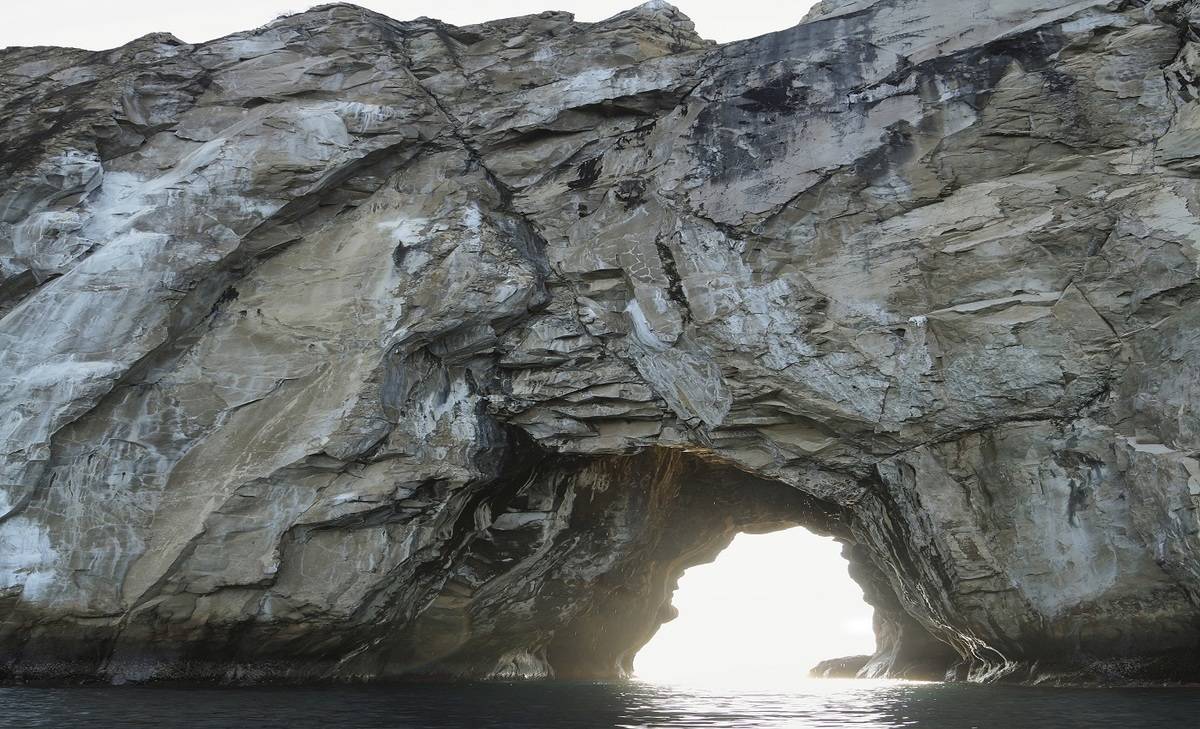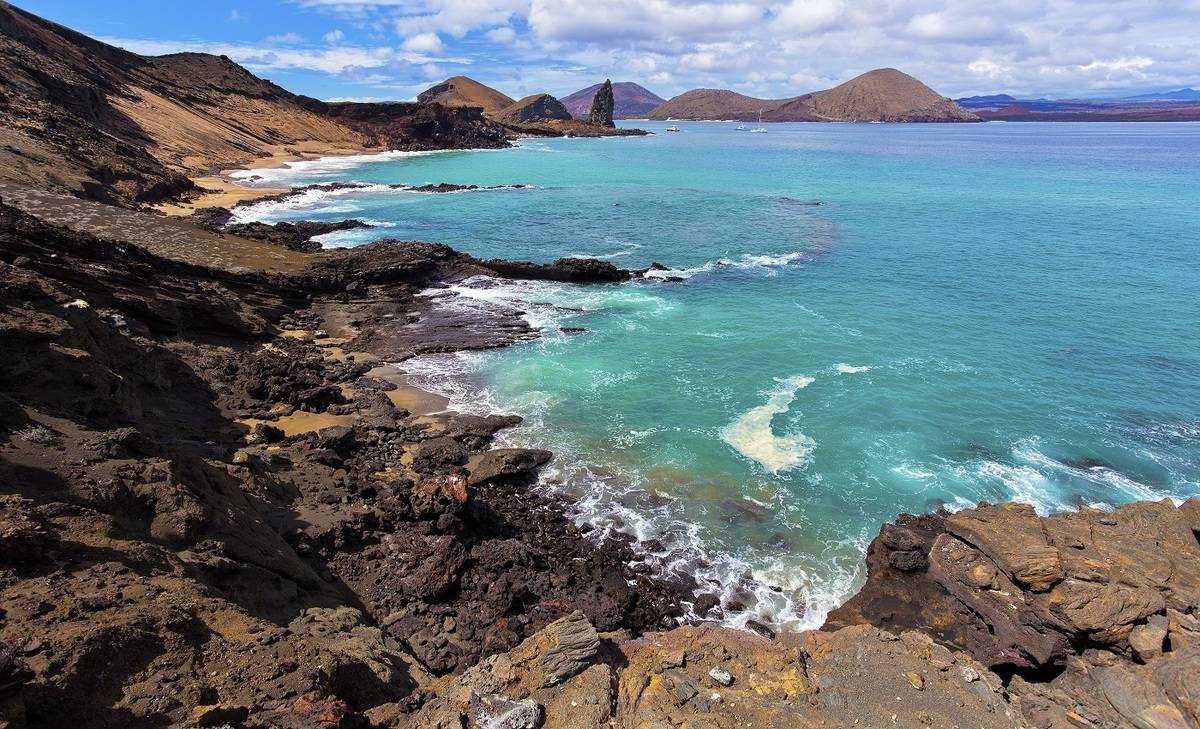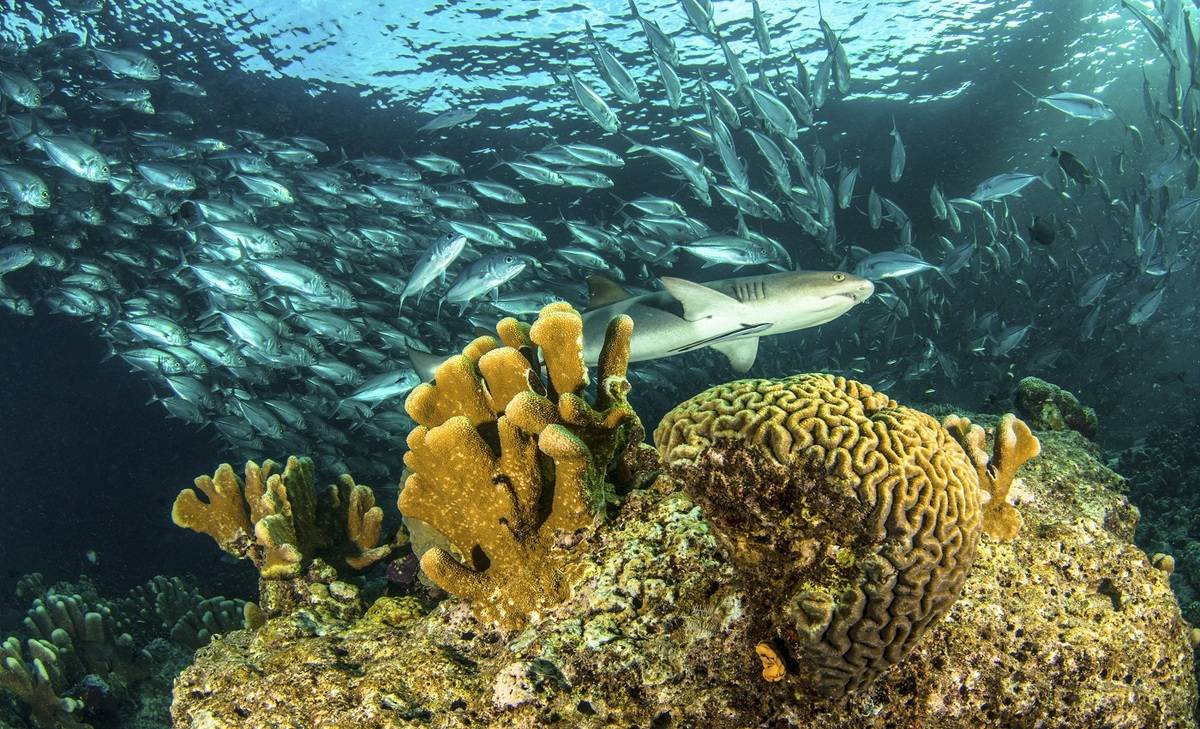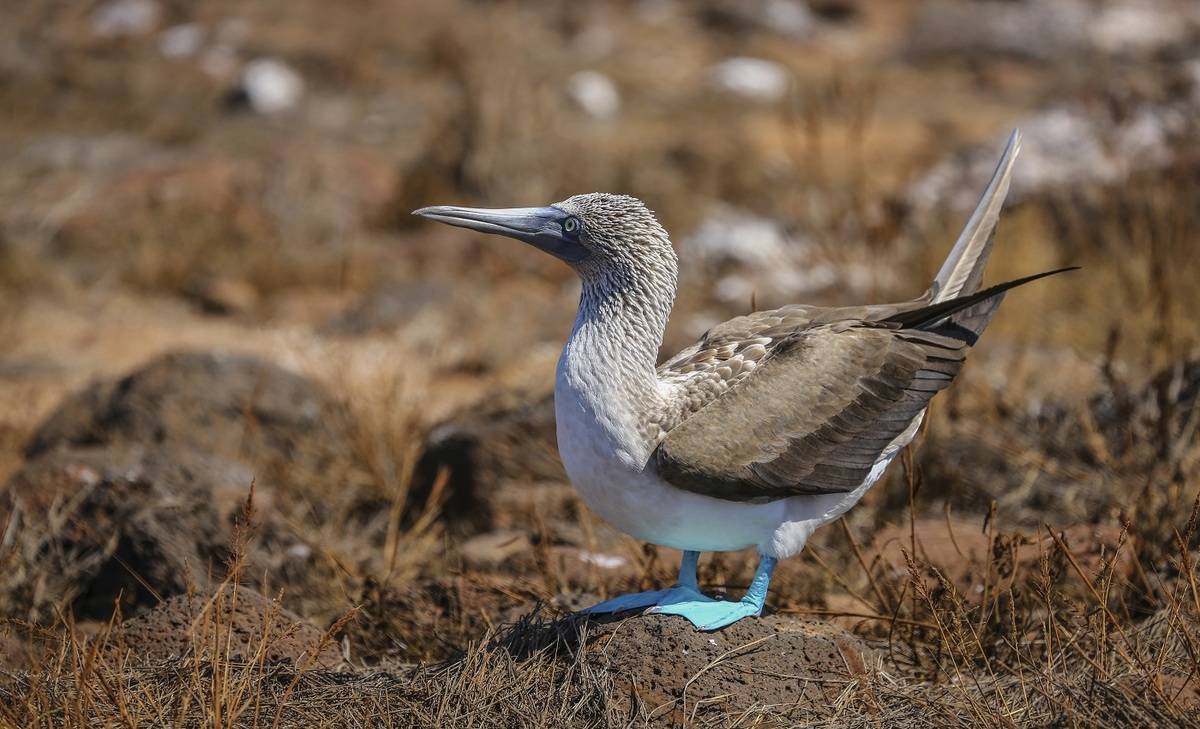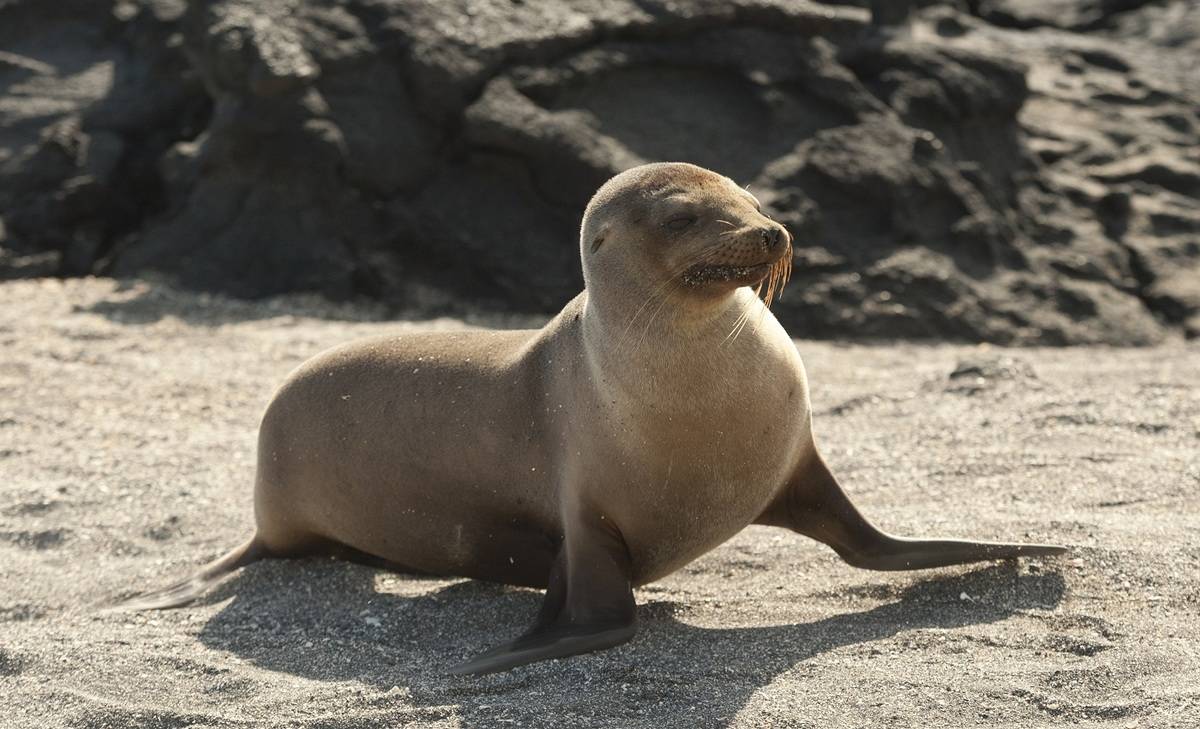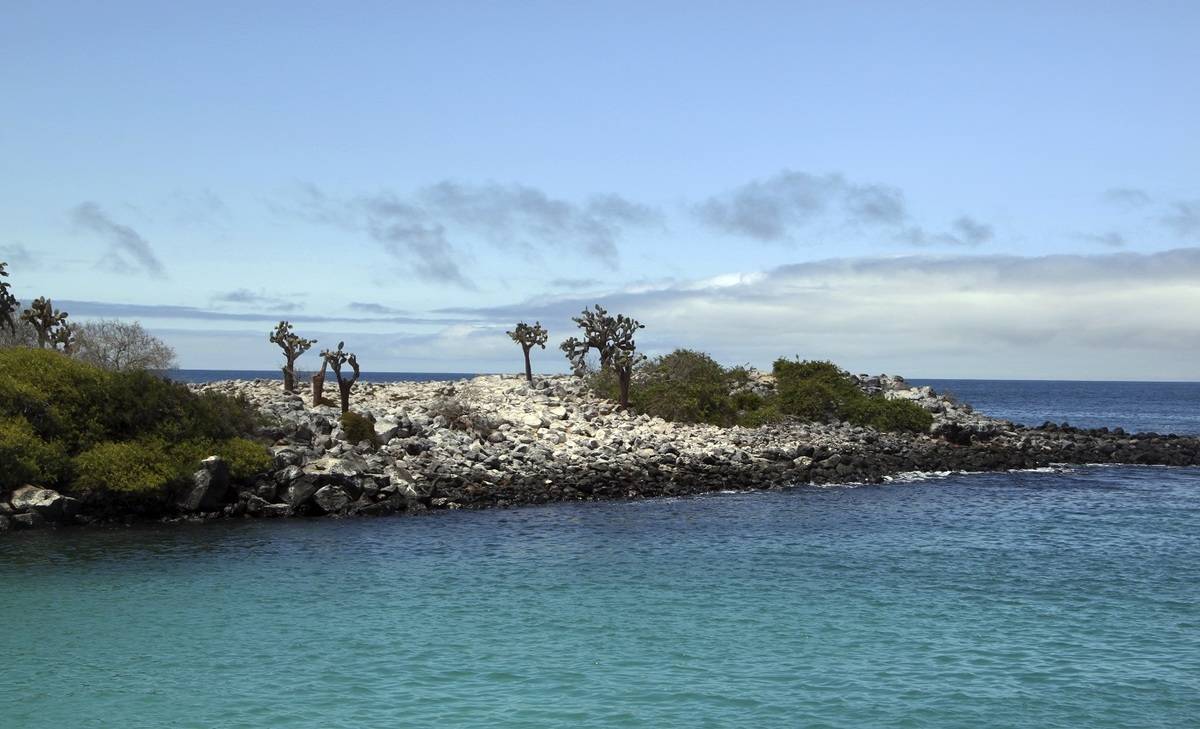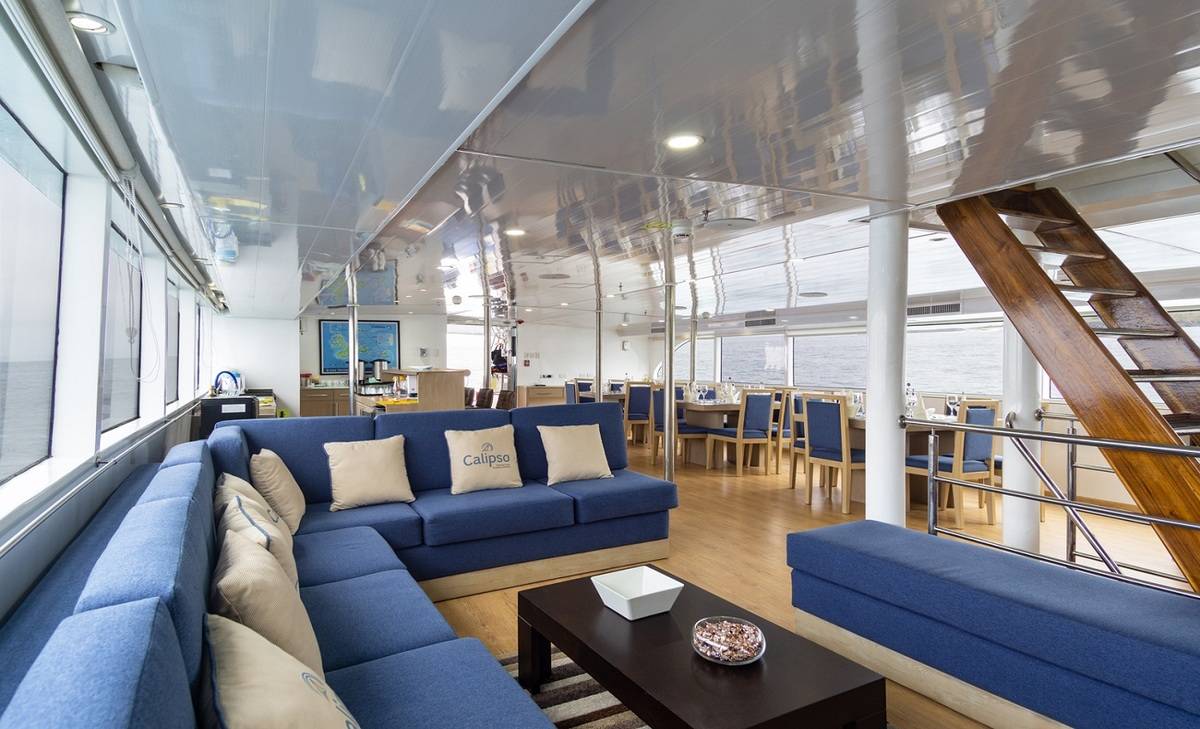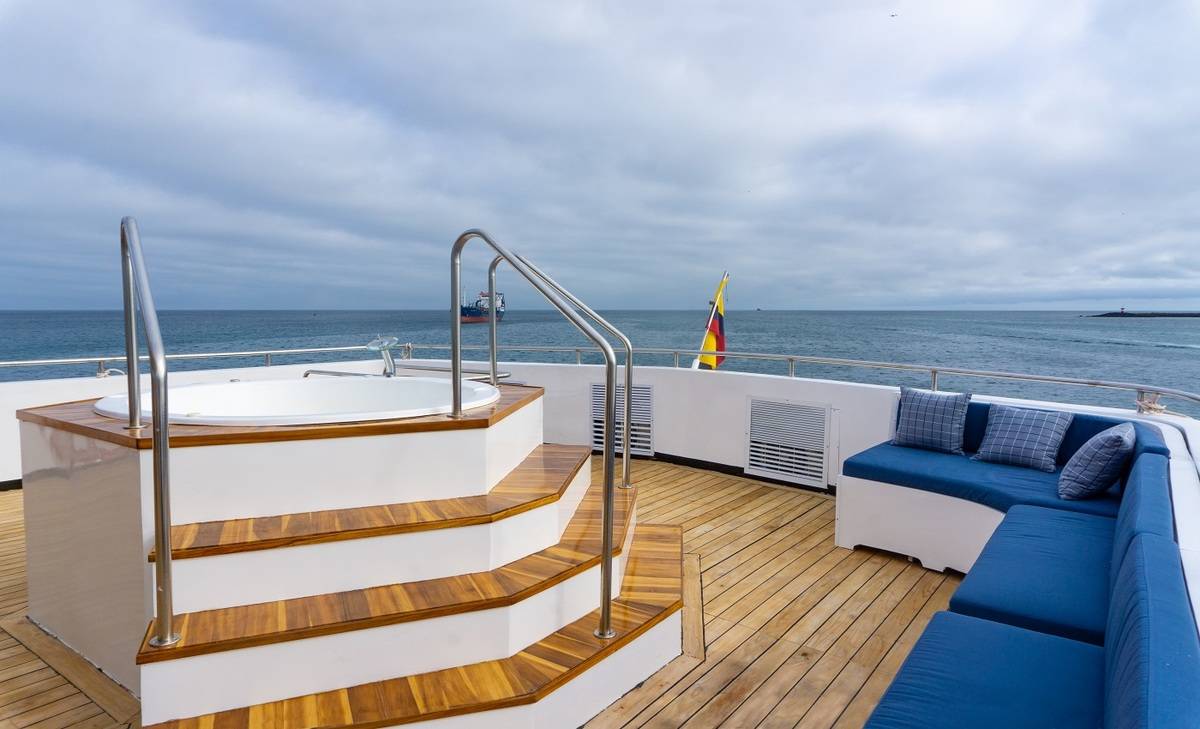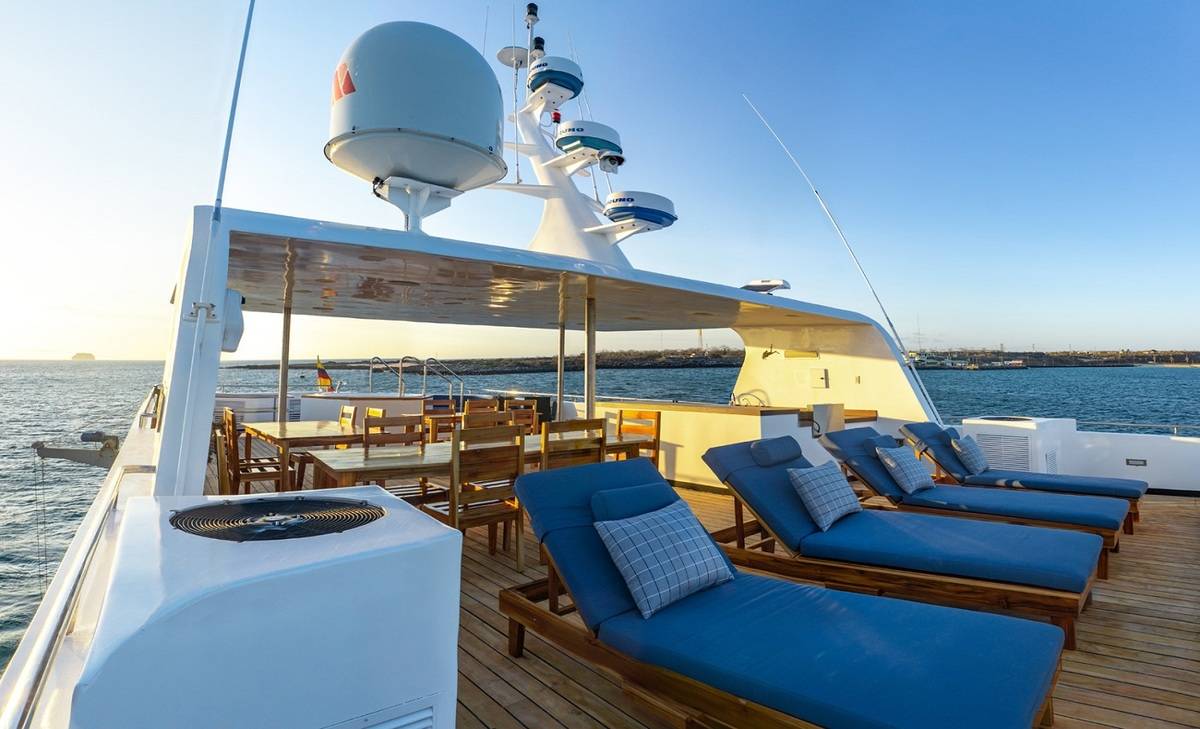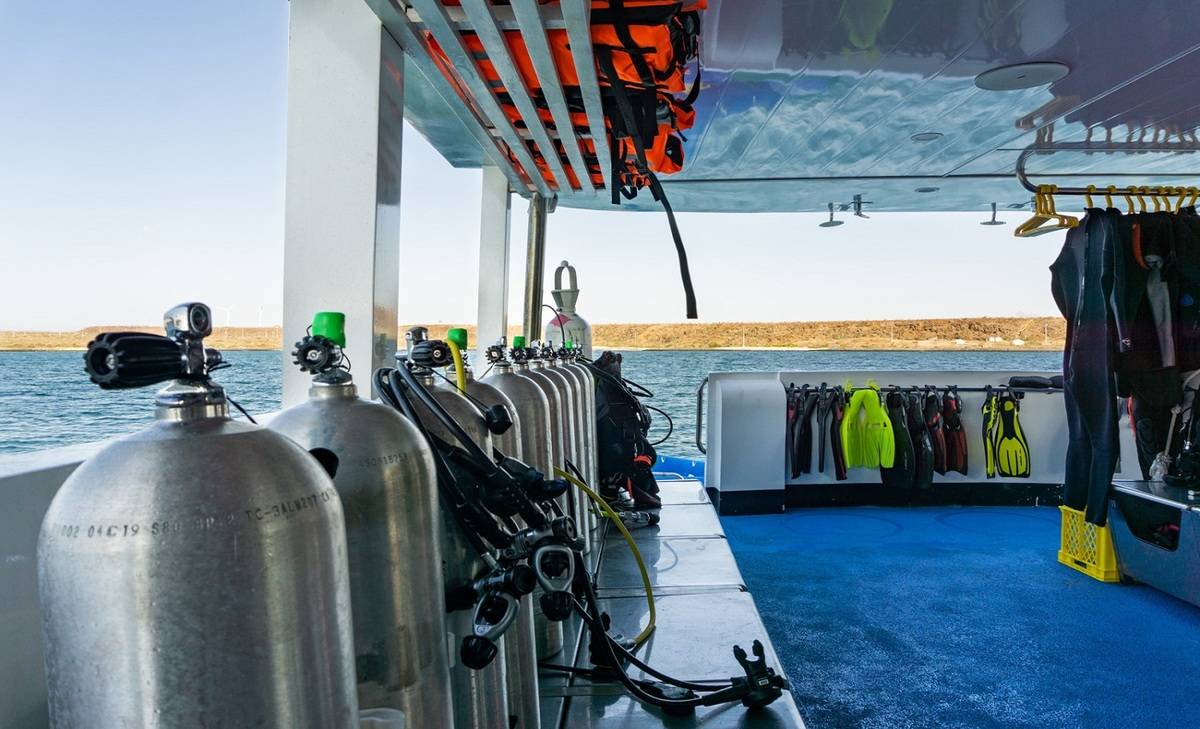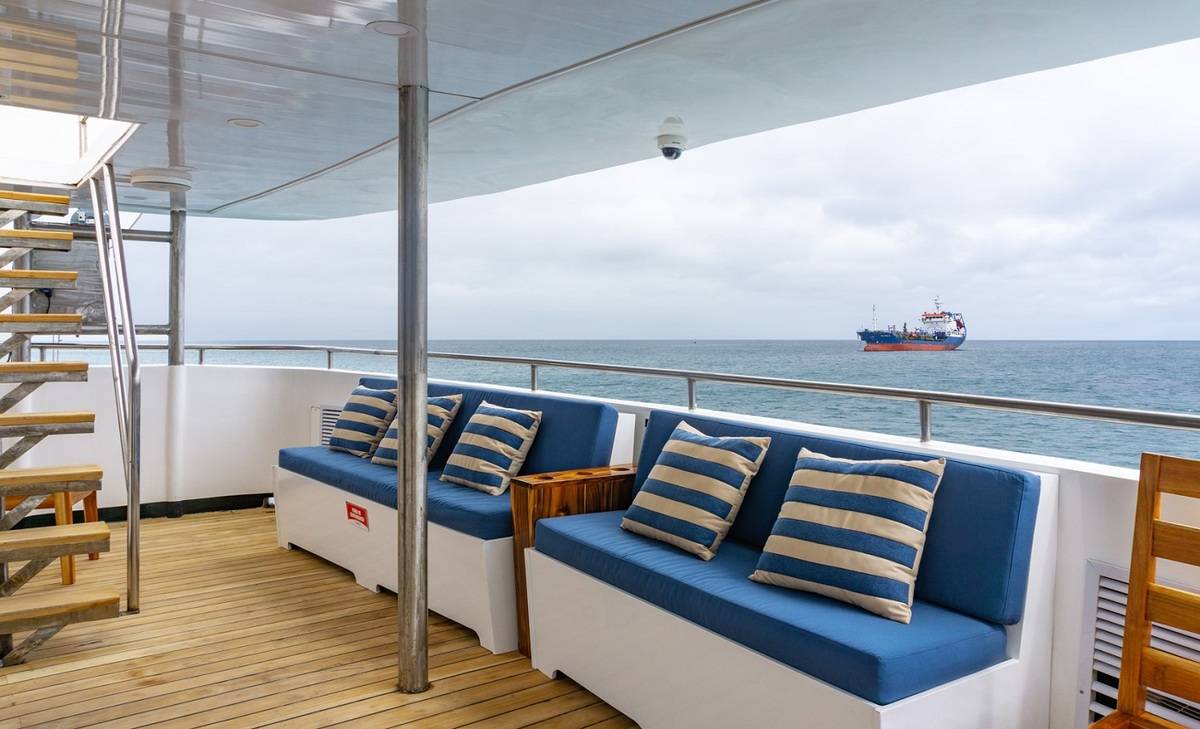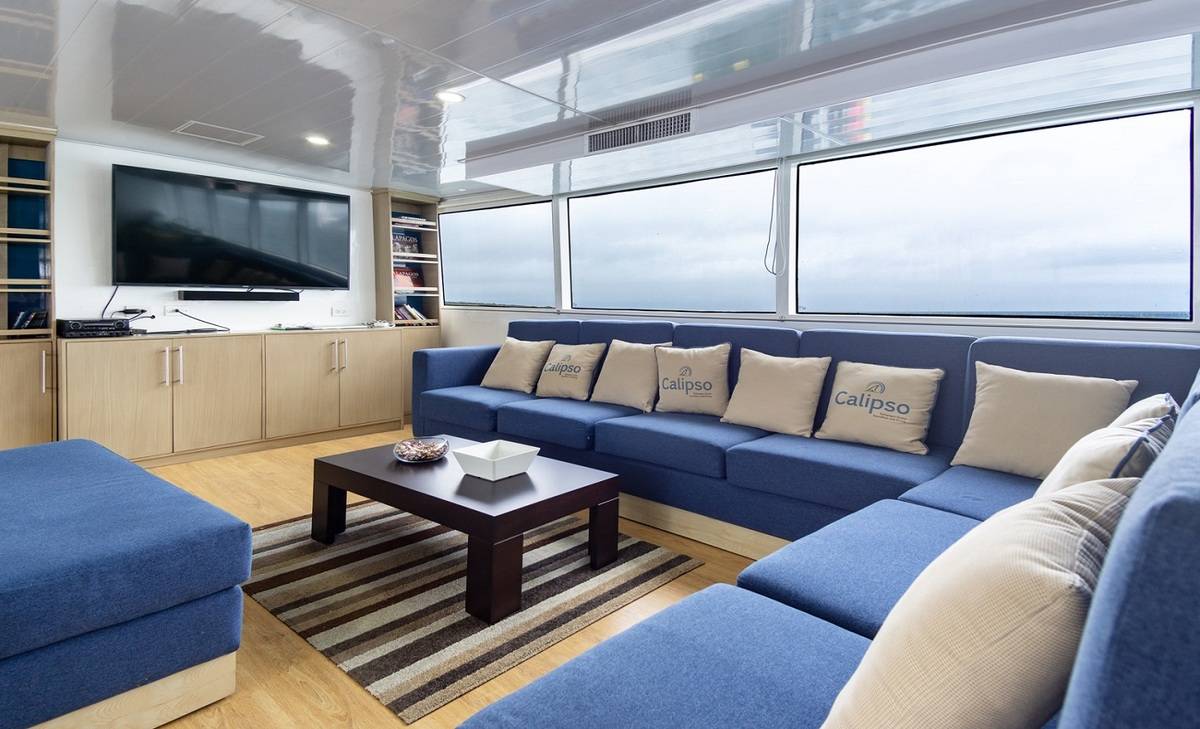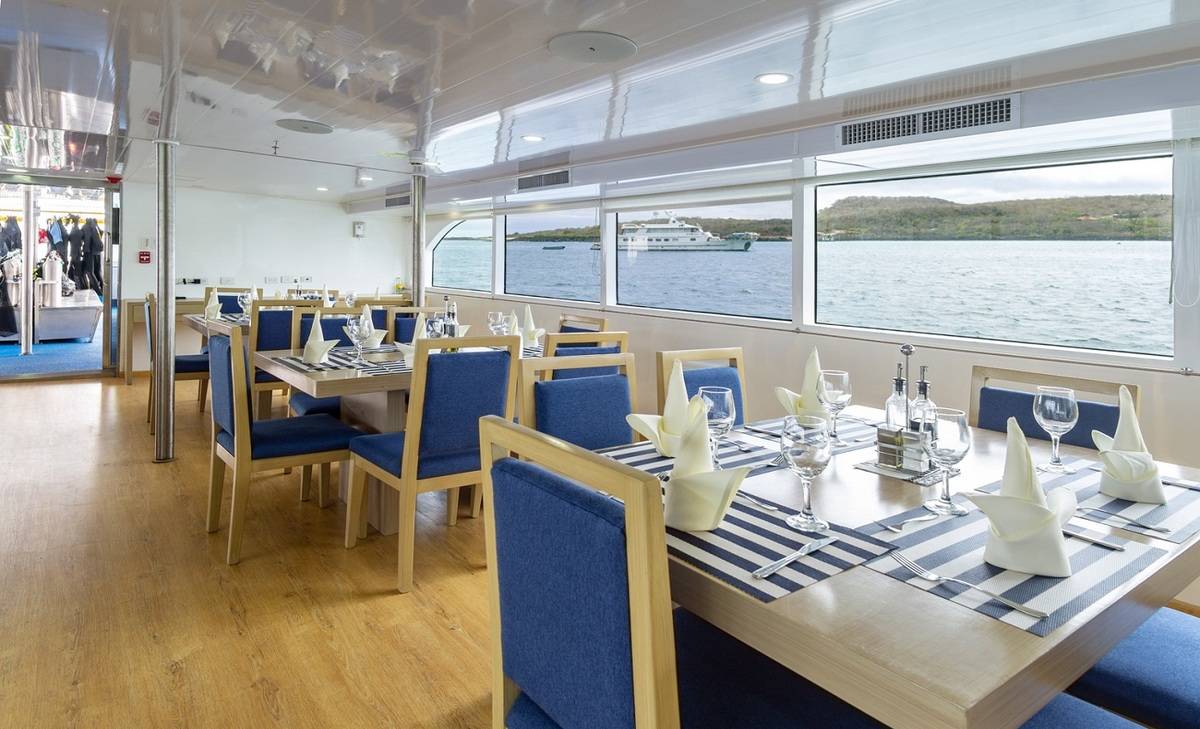Naturalist Cruise
8 Days - Calipso
Experience the abundant wildlife and spectacular scenery of the Galapagos aboard the Calipso on this magnificent 8 day adventure.
from USD $6545pp

Home » 8 Day Calipso: Naturalist Cruise
Itinerary Highlights:
- Visit Witch Hill and observe the unique wildlife, including booby birds, tropical fish and sea turtles.
- Visit the famous Pinnacle Rock on Bartholomew Island
- Discover the flightless cormorant nesting site and spot the Galapagos hawk at Espinoza Point
- Snorkel with penguins at Tagus Cove
- Spot land iguanas and giant tortoises at Urbina Bay
- View the Galapagos sea lions, blue-footed boobies and magnificent frigatebirds on North Seymour Island
- Discover South Plaza Island, home to one of the largest sea lion colonies
- Visit Post Office Bay and continue an 18th-century tradition of leaving an addressed postcard
- Visit Baroness Viewing Point and learn about the legend of the fascinating murder mystery
- Explore Cormorant Point, including the large flamingo lagoon and 'Green Beach'
- Visit the Charles Darwin Research Station to view turtles ranging from 3-inches to 4-feet long and a photo opportunity
Itinerary Brief:
- Day 1: San Cristobal Island
- Day 2: Bartholomew Island & Chinese Hat Islet
- Day 3: Fernandina Island & Isabela Island
- Day 4: Isabela Island
- Day 5: North Seymour Island & South Plaza Island
- Day 6: Floreana Island
- Day 7: Santa Fe Island & Santa Cruz Island
- Day 8: San Cristobal Island
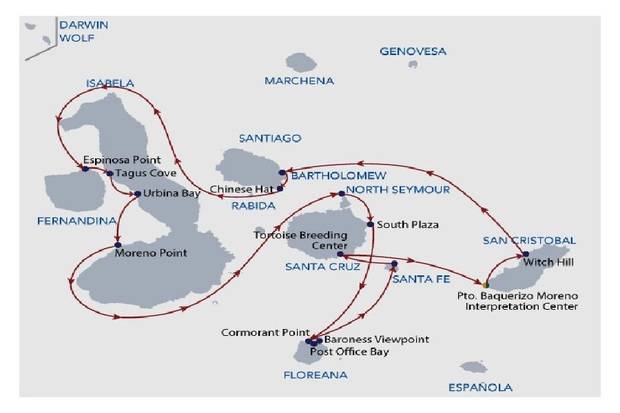
Day 1: San Cristobal Island
After a morning arrival time at San Cristobal Airport, you will be transferred to the boat for boarding. In the afternoon you will visit Witch Hill situated on the northern coast. This eroded hill and white sand create one of the most picturesque beaches in the Galapagos, home to an abundance of animals including sea turtles, rays and booby birds. This provides the perfect opportunity for swimming and snorkelling.
Day 2: Bartholomew Island & Chinese Hat Island
Arrive in the morning at Bartholomew Island, an extinct volcano and the home of the famous Pinnacle Rock. Hike up the volcano, observing the red, orange, black and green volcanic formations and experience one of the best views of all the islands. Visit the beach for possible sightings of the Galapagos penguin and snorkel to see the colourful fish, rays and reef sharks.
Chinese Hat Islet is located near the southeast coast of Santiago Island, whose name is derived from its distinct shape. It is the perfect location for hiking and snorkelling and to view geological formations such as lava tubes and lava flows.
Day 3: Fernandina Island & Isabela Island
Arrive in the morning at one of the most pristine island ecosystems, Espinoza Point. As no foreign species have invaded Fernandina Island, it is a great opportunity to see the flightless cormorant nesting site and the Galapagos hawk. The area also features an active volcano "La Cumbre" with lava fields reaching the ocean.
In the afternoon visit Tagus Cove on Isabela Island, to explore the winding trails by Lake Darwin revealing extraordinary views. Hike around the cove to view the Darwin Volcano and for possible sightings of penguins and flightless cormorants, then head north to Punta Tortuga, a beach surrounded by mangroves.
Day 4: Urban Bay & Moreno Point (Isabela)
Located at the base of the Alcedo Volcano between Tagus Cove and Elizabeth Bay, Urbina Bay is a great place to snorkel to see the coral reef, giant tortoises, tropical fish and rays. The area also features the biggest land iguanas in the Galapagos and two hiking trails.
Moreno Point is the perfect place for avid birdwatchers, with dinghy rides or hikes providing ample opportunity to view pink flamingos, gallinules and pintail ducks. Green sea turtles or white-tip sharks can also be spotted by hiking through the lava rocks leading to the tide pools.
Day 5: North Seymour Island & South Plaza Island
In the morning witness Galapagos sea lions, blue-footed boobies and frigatebirds on North Seymour Island. The island is characterised by its arid vegetation, and snorkelling or dinghy rides offer possible sightings of reef sharks, fish and garden eels.
South Plaza Island is a small island with steep cliffs which were formed by rising lava. It is inhabited by on the largest colonies of sea lions as well as colourful yellow and red iguanas. The plant 'sesuvium' is the most distinctive on this island, being a greenish yellow tone during the rainy season and turning a bright red in the dry season.
Day 6: Post Office Bay, Baroness Viewing Point & Cormorant Point (Floreana Island)
Continue a tradition from 18th-century whalers at Post Office Bay, where they would use a wooden barrel as a mailbox for other passing sailors to deliver. Tourists now leave addressed postcards in the box for others to deliver should they be travelling to the same destination as the letter. The area also contains a short hiking trail and time for snorkelling.
Later in the morning head to Baroness Viewing Point, where legend speaks of a murder mystery involving a baroness and her three lovers. Easy hiking trails in this area allow for exploration of the flora and fauna as well as spectacular views and sightings of sea turtles.
An afternoon in Cormorant Point offers plenty of time for birdwatching and experiencing distinct and fascinating beaches. The area is home to a large flamingo lagoon which also attracts common stilts and white-cheeked pintails. Green Beach is a unique attraction, as well as Four Sand beach composed of white coral.
Day 7: Santa Fe Island & Santa Cruz Island
A morning in Santa Fe consists of a small picturesque bay and two hiking trails. One trail leads up a cliff to reveal a scenic view, while the other goes from a small beach to a tall prickly pear cactus forest. Land iguanas and giant tunas characterise this island.
Santa Cruz Island is the site of the Charles Darwin Research Station which is home to turtles ranging from 3-inches (new hatchlings) to 4-feet long. Subspecies of turtles interact with one another and many of the older turtles are accustomed to humans stretching out their heads for a photo opportunity. The babies are kept until they are about four years old and strong enough to survive on their own.
Day 8: San Cristobal Island
Visit The Interpretation Center which was opened in 1998 as a phase of the project “Interpretation and Environment Education Project.” Visitors enjoy expositions on natural history, human history, and conservation. The conservation efforts represent the movement to protect the wildlife and natural environment through means of population and tourist control. The Interpretation Center has an outdoor stadium, audio-visual equipment, and meeting rooms.
Cabin Details
Standard Twin Cabin
13.5 m2, twin or double bed, private bathroom, hot water, air conditioning
Calipso Deckplan
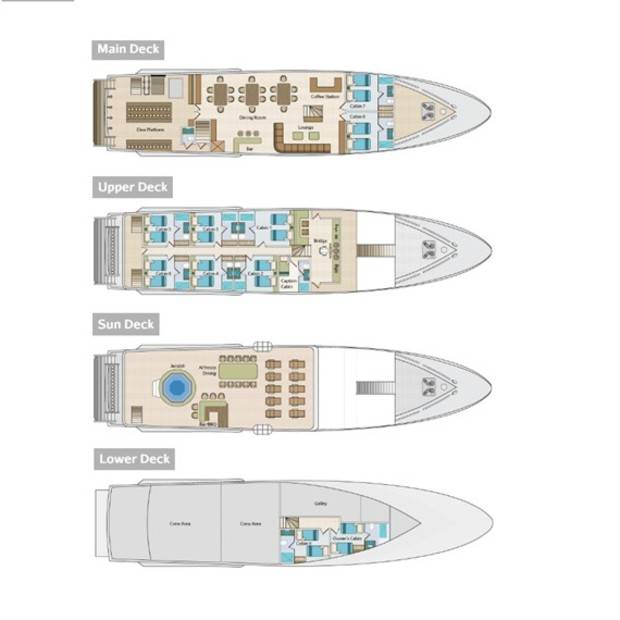
Specifications
- Year of construction: 1991, rebuild 2019
- Type: Motor Yacht
- Length: 115 ft (35 m)
- Beam: 24 ft (7.3m)
- Electricity: 110 & 220 V
- Draft: 6.2 ft (1.9 m)
- Capacity: 16 passengers
- Accommodation: Main Deck:
2 Cabins (Twin beds) 140 ft²/13.5 m², dining room, bar, social area
Upper Deck:
2 Cabins (Twin beds) 120 ft²/11.2 m², 4 Cabins (Twin beds) 130 ft²/12.2 m²
Sun Deck:
Jacuzzi, al fresco dining and social area
Lower Deck:
2 Cabins 120 ft²/11.3 m²
*All cabins with private bathrooms, hot water and air-conditioning / All cabins can be converted into matrimonials, except on the ones located in the lower deck
- Main engines: Cummins NTA855-M @400hp (x2)
- Generators: Cummins 6B-CP 99 kW (x2)
- Cruising speed: 12 knots
- Exterior: Naval steel and fiber glass
- Water capacity: 5,000 gls.
- Crew: 10 Crew members + 1 Guide
- Safety & Navigation: • First Aid, Oxygen and AED
• Life Jackets and Life Rafts
• Nautilus Lifelines, dive alerts
• Radar and sonnar
• VHF Radio
• Antenna GPS
• Searchlight and Horn
• Bilge pump alarm
• Fire Alarm System and Extinguishers
• Smoke and temperature detectors
• CO2 reserve (150 Kg)
Whats included?
- All meals and excursions
- Transfers in the islands
- Bilingual National Park Guide
- Use of snorkelling equipment/Wetsuit
What’s not included?
- Roundtrip Airfare to/from Galapagos
- Alcoholic drinks
- $100 Galapagos National Park fee
- $20 Transit Control Card
- Nitrox ($150)
- Dive equipment
- Travel / medical insurance
- Tips
- Personal Expenses

